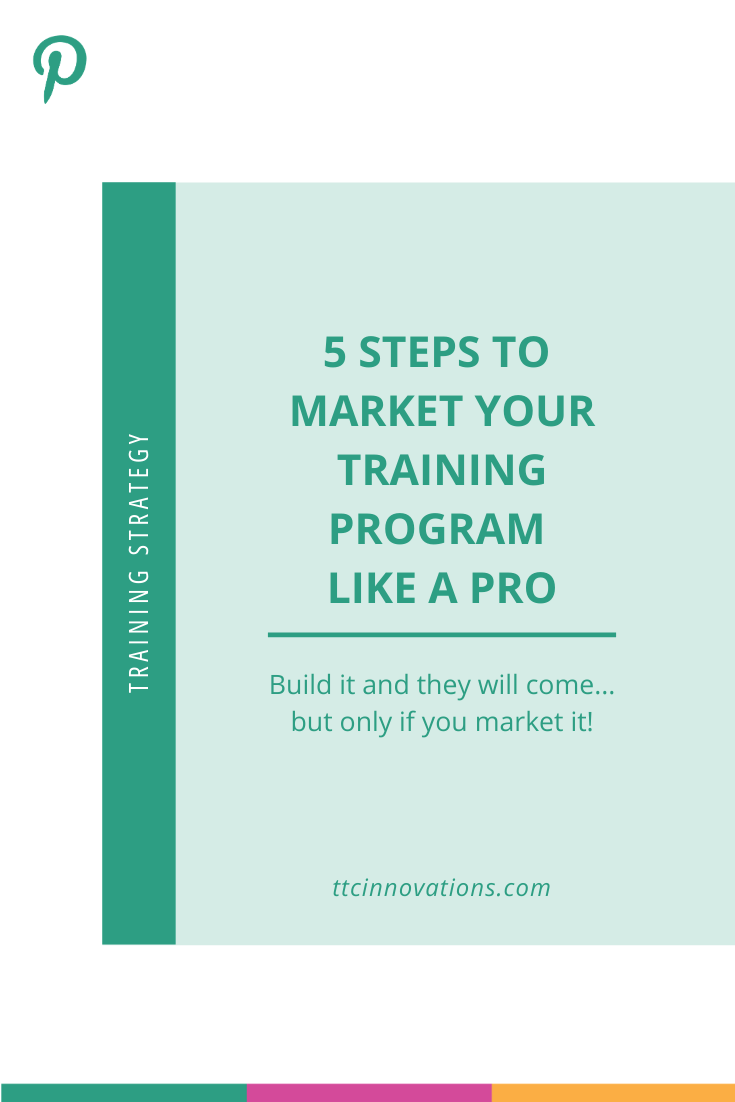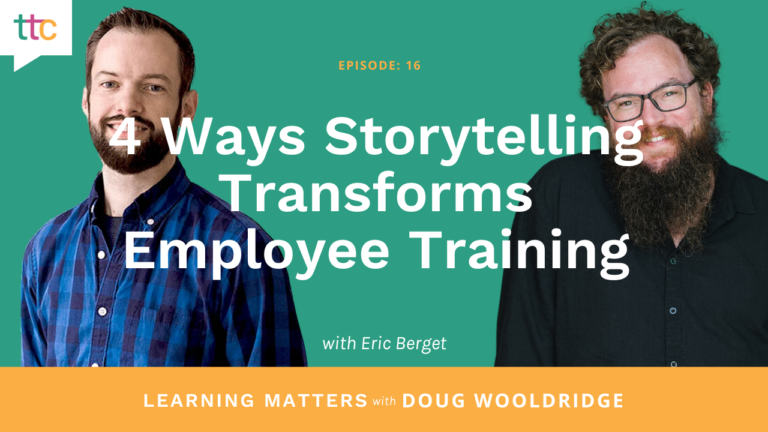Who says trainers can’t think like marketers?
Everyone’s familiar with the old question: “If a tree falls in the forest and no one is there to hear it, does it make a sound?”
Here’s another: “If a training professional creates a great program and no one takes the course, is it still training?”
If you’re a corporate trainer, it’s best if you never have to answer the second question. You want people to experience your training, right? You want to help the company and the workers, and prove your worth in the process, right?
Unfortunately, too many trainers adopt a “build it and they will come” mentality that rarely, if ever, works. If you want people to take your courses, you’ll have to promote your training.
“Hey!” you’re saying. “If I wanted to be in sales, I’d be in sales!” And in your best impression of Dr. McCoy from Star Trek: “Dang it, Allan, I’m a trainer, not a marketer!”
It takes a certain mindset to be a great trainer. Among other things, you need to have great organization skills and a desire to reach and help people. And guess what? That very mindset can help you be a great marketer. AND being a great trainer means also being a great promoter. So, let’s take off our teacher hat for a moment and talk about some effective marketing techniques for training programs.
Step 1: Have a Plan
Marketing for learning and development is no different from marketing anything else – it starts with a plan. Fortunately for you, many elements of a marketing plan are similar to the elements of a training plan. Ask yourself:
- What are my goals?
- What metrics will I use to measure success?
- What will my action plan look like?
Hmm. Sounds a little familiar, right? And here’s another thought: Can you ask someone in your company’s marketing department for help? Chances are pretty good that you’ve developed some relationships because you’ve created great training for them in the past. A marketing professional may be able to give you more ideas over one lunch than you could come up with in a month.
Step 2: Identify Your Audience
You’ve already done most of the work for step 2, right? You identified and dissected your audience when you developed the training. So, now it’s time to use that knowledge in your marketing efforts. What are their pain points? What are their needs? Their wants? Come on, you already know! So, build that information into your action plan. Give them a reason to take the course that’s personal to them and their jobs.
Step 3: Look for New Marketing Channels
Think about the methods you’re currently using to promote new training programs. Email? An internal web site?
Chances are, these channels are already stuffed with information, requests, and yes, marketing. So, try something new. According to Emphasis:
By expanding beyond simply emailing people and using channels that are much less crowded, you’ll increase your chances of reaching potential audiences. Channels and activities you can use include:
- articles, case studies, videos and other testimonials on your intranet pages
Example from the ttcAcademy, ttcInnovations’ intranet.
- banner ads on your intranet home page
- posts to Facebook groups and instant messaging channels used by specific teams
- posters on noticeboards
- leaflets in payslips, on desks or in reception/kitchen areas
- articles in staff newsletters
Example from Inside Innovations, ttcInnovations’ monthly internal network newsletter.
- presentations for management and at team meetings
- drop-in sessions during lunch breaks
- taster sessions (bite-sized learning to give staff a feel for the training available).
Teaser video example we created for an internal initiate.
The possibilities are truly endless. Again, your marketing department may have great ideas on this subject!
Step 4: Use Benefits Language
Remember these three words: “So you can . . .”
Those three words are the heart and soul of benefits language and the answer to the most important sales and marketing question: “What’s in it for me?”
“This program teaches you about the newest shortcut keys in the ABC application so you can save up to two hours per day when entering XYZ.”
“Learn about the latest techniques from ABC so you can reach customers more effectively and close more sales.”
You get the idea, right? Use benefits language so you can convince more people to take your courses. See what I did there?
Step 5: Seek Out Testimonials
These days when we discuss the latest fashions or trends everyone talks about “influencers.” But your company is also filled with influencers – key people that can make or break a program in the company, including yours. So, why not reach out to this powerful group?
Learndot says:
What better way to get a sense of the value your training program brings than hearing directly from your target audience? Start with a controlled experiment: make a list of your top 20 customers, include those who have repeatedly asked for training, and ask them to take your program. Picking up the phone may sound time-consuming, but it is the most effective way because it makes this outreach very personal and they will be more likely to agree.
You probably already know who these influencers are. You may even be able to get them out front by featuring them in webinars and blog posts.
Taking Action
Great training departments don’t sit around waiting for trainees to line up at their door, and they don’t wait for management to assign training. Great trainers create great training – and they have the marketing skills to get workers to want to experience it.
So, what’s your plan?








